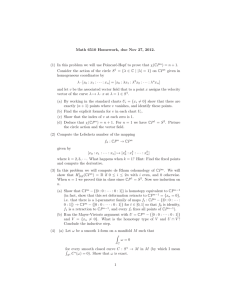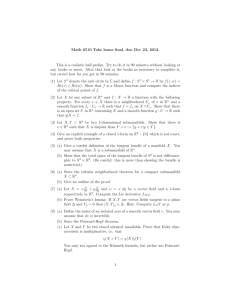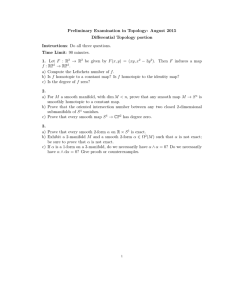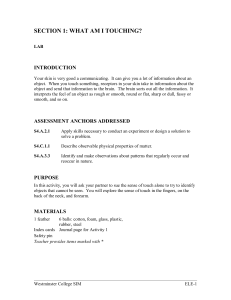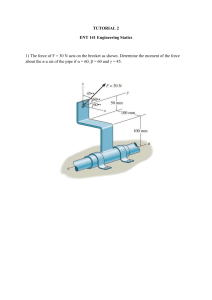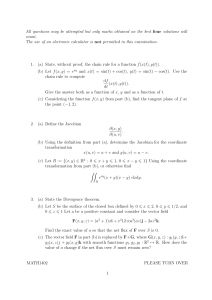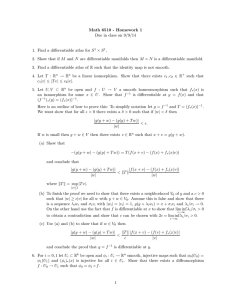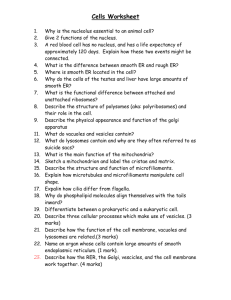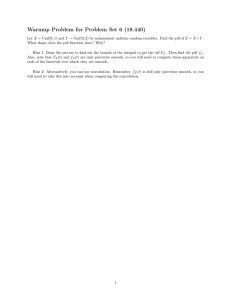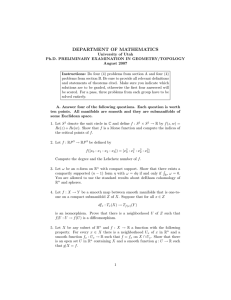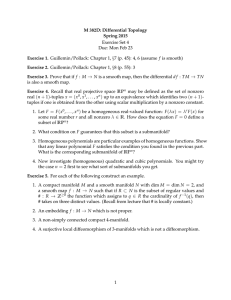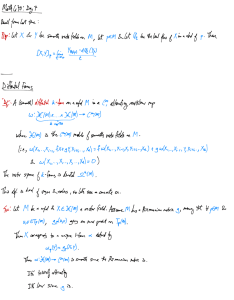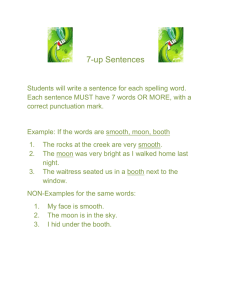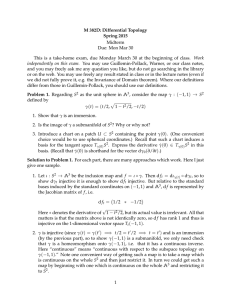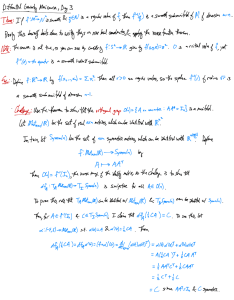1. For a vector field X with the corresponding flow... ) , and a differential form ω ∈ Ω
advertisement
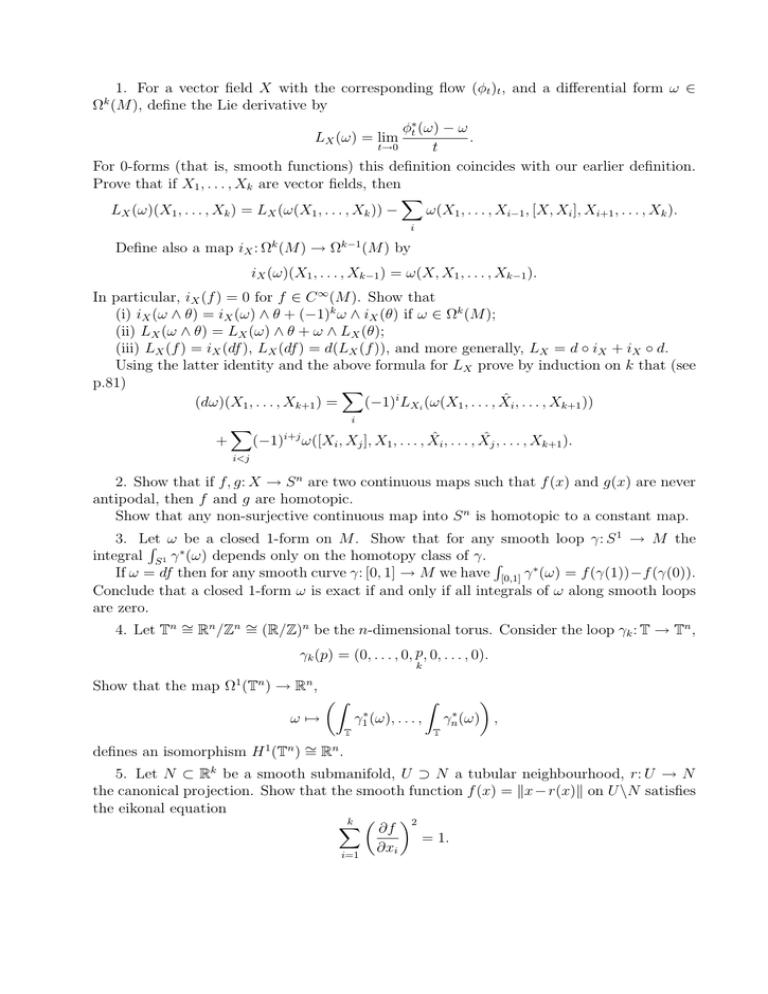
1. For a vector field X with the corresponding flow (φt )t , and a differential form ω ∈ Ω (M ), define the Lie derivative by k φ∗t (ω) − ω LX (ω) = lim . t→0 t For 0-forms (that is, smooth functions) this definition coincides with our earlier definition. Prove that if X1 , . . . , Xk are vector fields, then X LX (ω)(X1 , . . . , Xk ) = LX (ω(X1 , . . . , Xk )) − ω(X1 , . . . , Xi−1 , [X, Xi ], Xi+1 , . . . , Xk ). i Define also a map iX : Ωk (M ) → Ωk−1 (M ) by iX (ω)(X1 , . . . , Xk−1 ) = ω(X, X1 , . . . , Xk−1 ). In particular, iX (f ) = 0 for f ∈ C ∞ (M ). Show that (i) iX (ω ∧ θ) = iX (ω) ∧ θ + (−1)k ω ∧ iX (θ) if ω ∈ Ωk (M ); (ii) LX (ω ∧ θ) = LX (ω) ∧ θ + ω ∧ LX (θ); (iii) LX (f ) = iX (df ), LX (df ) = d(LX (f )), and more generally, LX = d ◦ iX + iX ◦ d. Using the latter identity and the above formula for LX prove by induction on k that (see p.81) X (dω)(X1 , . . . , Xk+1 ) = (−1)i LXi (ω(X1 , . . . , X̂i , . . . , Xk+1 )) i + X (−1)i+j ω([Xi , Xj ], X1 , . . . , X̂i , . . . , X̂j , . . . , Xk+1 ). i<j 2. Show that if f, g: X → S n are two continuous maps such that f (x) and g(x) are never antipodal, then f and g are homotopic. Show that any non-surjective continuous map into S n is homotopic to a constant map. 1 3. Let R ω ∗be a closed 1-form on M . Show that for any smooth loop γ: S → M the integral S 1 γ (ω) depends only on the homotopy class of γ. R If ω = df then for any smooth curve γ: [0, 1] → M we have [0,1] γ ∗ (ω) = f (γ(1))−f (γ(0)). Conclude that a closed 1-form ω is exact if and only if all integrals of ω along smooth loops are zero. 4. Let Tn ∼ = Rn /Zn ∼ = (R/Z)n be the n-dimensional torus. Consider the loop γk : T → Tn , γk (p) = (0, . . . , 0, p, 0, . . . , 0). k Show that the map Ω1 (Tn ) → Rn , Z ω 7→ T γ1∗ (ω), . . . , Z γn∗ (ω) , T defines an isomorphism H 1 (Tn ) ∼ = Rn . 5. Let N ⊂ Rk be a smooth submanifold, U ⊃ N a tubular neighbourhood, r: U → N the canonical projection. Show that the smooth function f (x) = kx − r(x)k on U \N satisfies the eikonal equation 2 k X ∂f = 1. ∂xi i=1
